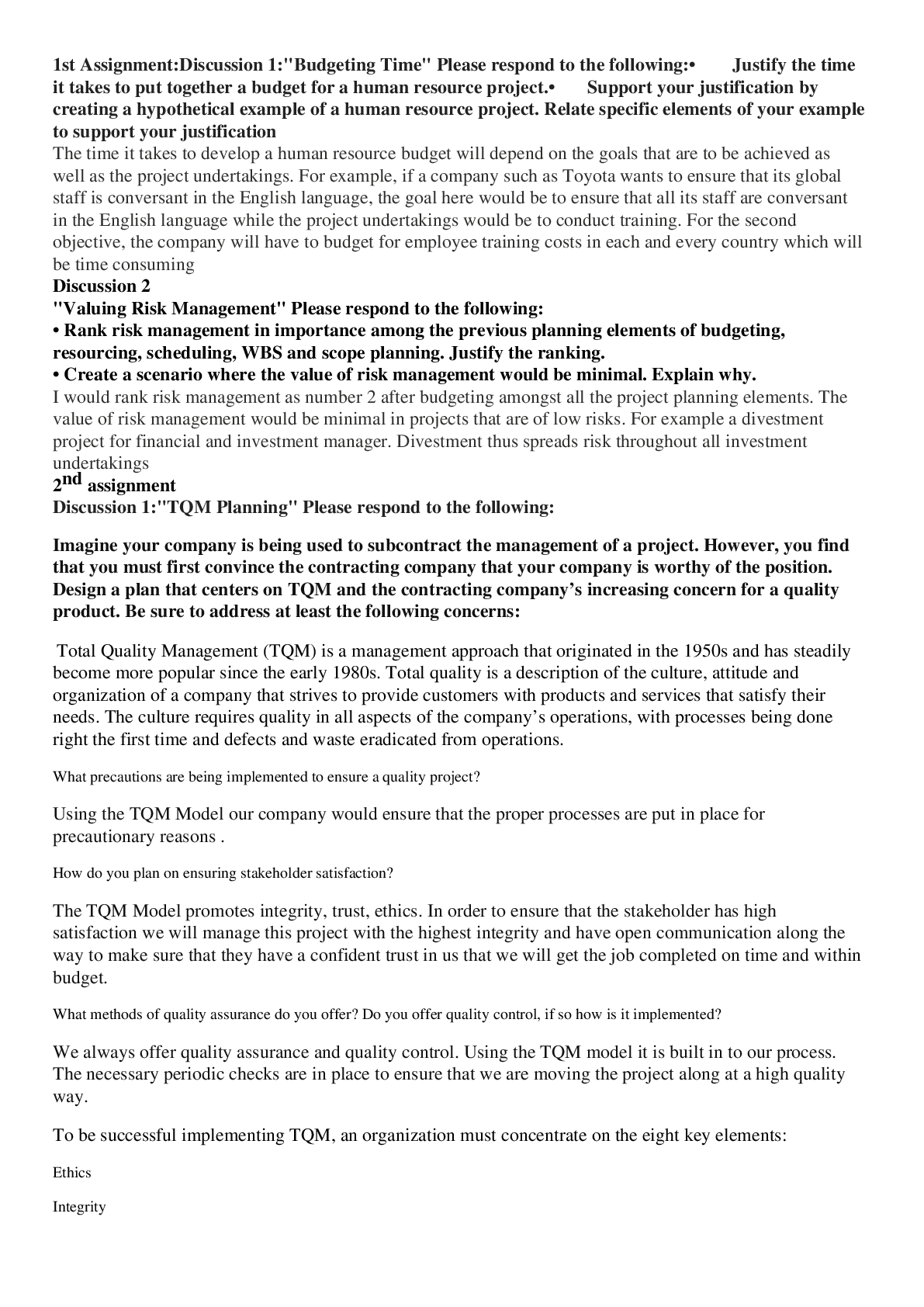Health Care > EXAM > NURSING TEST EXAM DIABETES MELLITUS NCLEX QUIZ 1 25 Q&A’S WITH RATIONALES (GUARANTEED PASS) | RATE (All)
NURSING TEST EXAM DIABETES MELLITUS NCLEX QUIZ 1 25 Q&A’S WITH RATIONALES (GUARANTEED PASS) | RATED A+
Document Content and Description Below
NURSING TEST EXAM DIABETES MELLITUS NCLEX QUIZ 1 25 Q&A’S WITH RATIONALES (GUARANTEED PASS) | RATED A+ 1. Knowing that gluconeogenesis helps to maintain blood glucose levels, a nurse should: o A... . Document weight changes because of fatty acid mobilization. o B. Evaluate the patient’s sensitivity to low room temperatures because of decreased adipose tissue insulation. o C. Protect the patient from sources of infection because of decreased cellular protein deposits. o D. Do all of the above. Correct answer: D. Do all of the above All measures ensure gluconeogenesis in maintaining glucose homeostasis. The purpose of gluconeogenesis is to maintain blood glucose levels during a fast. In the human body, some tissues rely almost exclusively on glucose as a metabolic fuel source. Option A: Fatty acid oxidation is indispensable for gluconeogenesis; although fatty acid carbon cannot be used for glucose, fat oxidation provides both an energy source (ATP) to support gluconeogenesis and acetyl coenzyme A (acetyl- CoA) to activate pyruvate carboxylase. Option B: Cold exposure is associated with hypothalamic signals to constrict the peripheral blood vessels, minimize sweat production, and increase metabolic heat production (i.e., shivering and nonshivering thermogenesis) during prolonged and/or severe cold exposure to prevent dangerous drops in core temperature. Option C: A protein deficit can also take its toll on the immune system. Impaired immune function may increase the risk or severity of infections, a common symptom of severe protein deficiency. 2. The nurse is admitting a patient diagnosed with type 2 diabetes mellitus. The nurse should expect the following symptoms during an assessment, except: Stuvia @Med Excellence Hub A. Hypoglycemia B. Frequent bruising C. Ketonuria D. Dry mouth Correct answer: A. Hypoglycemia Hypoglycemia does not occur in type 2 diabetes unless the patient is on insulin therapy or taking other diabetes medication. In T2DM, the response to insulin is diminished, and this is defined as insulin resistance. During this state, insulin is ineffective and is initially countered by an increase in insulin production to maintain glucose homeostasis, but over time, insulin production decreases, resulting in T2DM. Option B: Type 2 diabetes can affect blood circulation which makes it easier for the skin to bruise. Decreased blood flow to the area surrounding an injury prevents a wound from healing properly, resulting in the development of bruiselike lesions or spots. Option C: The presence of ketones in the urine happens due to a lack of available insulin. T1DM patients can often present with ketoacidosis (DKA) coma as the first manifestation in about 30% of patients. Option D: Losing a lot of fluids caused by frequent urination can lead to dehydration hence patients can develop dry mouth. People with diabetes are prone to dehydration. In those with diabetes, a person’s blood glucose levels can become too high. The term for this is hyperglycemia, and it can cause a person to experience dry mouth. 3. Glycosylated hemoglobin (HbA1C) test measures the average blood glucose control of an individual over the previous three months. Which of the following values is considered a diagnosis of pre-diabetes? A. 6.5-7% Stuvia @Med Excellence Hub B. 5.7-6.4% C. 5-5.6% D. >5.6% Correct Answer: B. 5.7-6.4% Glycosylated hemoglobin levels between 5.7%-6.4% are considered as pre-diabetes. The hemoglobin A1c (glycated hemoglobin, glycosylated hemoglobin, HbA1c, or A1c) test is used to evaluate a person’s level of glucose control. The test shows an average of the blood sugar level over the past 90 days and represents a percentage. Anyone with an HbA1c value of 5.7 % to 6.4 % is considered to be prediabetic Option A: Glycosylated hemoglobin levels over 6.5 % are considered diagnostic of diabetes. Diabetes can be diagnosed with an HbA1c of 6.5% or higher. The American Diabetes Association (ADA) recommends that the HbA1c is checked twice a year in patients that are stable and well-controlled, versus every 3 months in patients with changes in their medications, or not well controlled. Options C and D: Glycosylated hemoglobin levels less than 5.6 % are normal. For an HbA1c test to classify as normal, or in the non-diabetic range, the value must be below 5.7 %. Tests should be sent to a laboratory certified by the NGSP to ensure results are standardized. [Show More]
Last updated: 9 months ago
Preview 5 out of 27 pages

Loading document previews ...
Buy this document to get the full access instantly
Instant Download Access after purchase
Buy NowInstant download
We Accept:

Reviews( 0 )
$15.00
Can't find what you want? Try our AI powered Search
Document information
Connected school, study & course
About the document
Uploaded On
Oct 17, 2024
Number of pages
27
Written in
Additional information
This document has been written for:
Uploaded
Oct 17, 2024
Downloads
0
Views
8

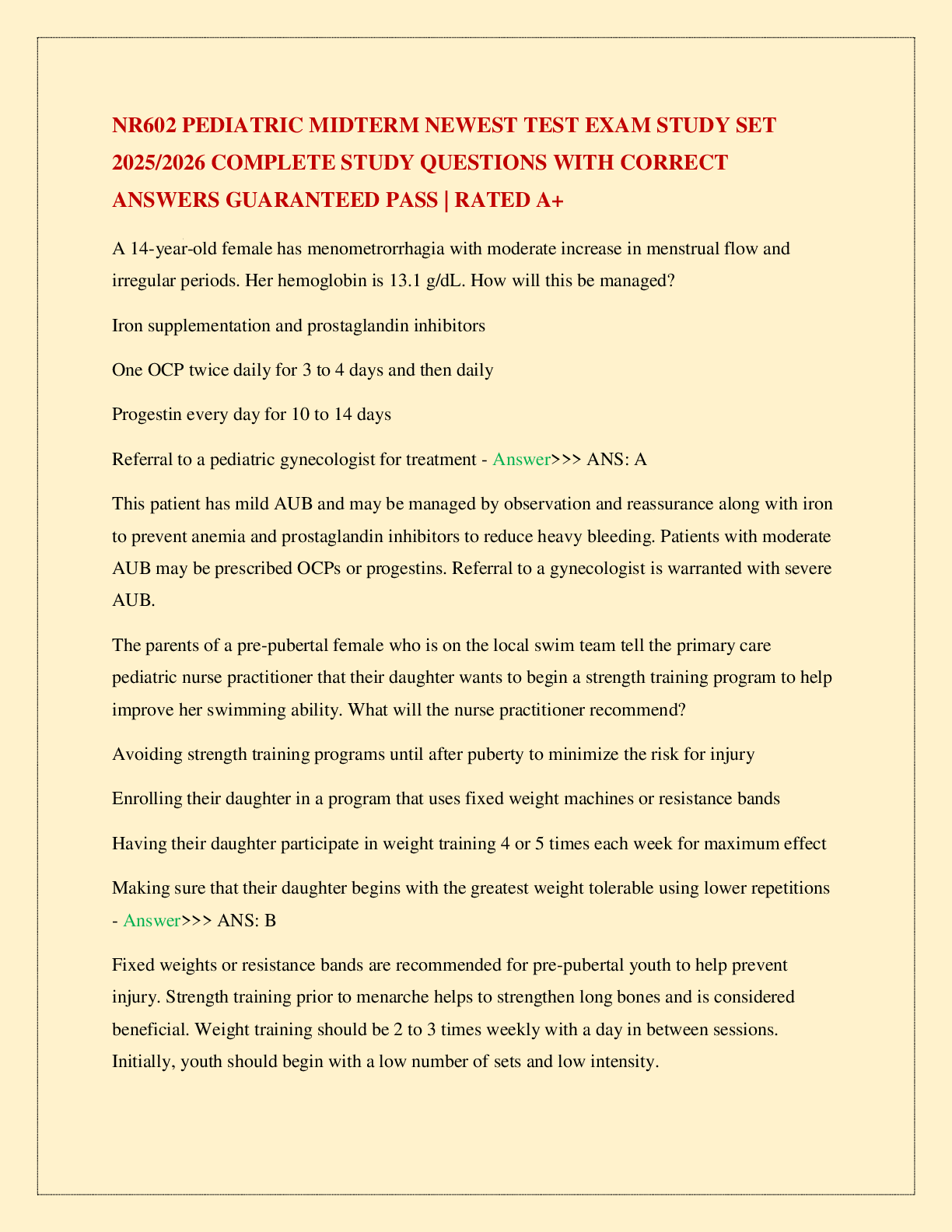

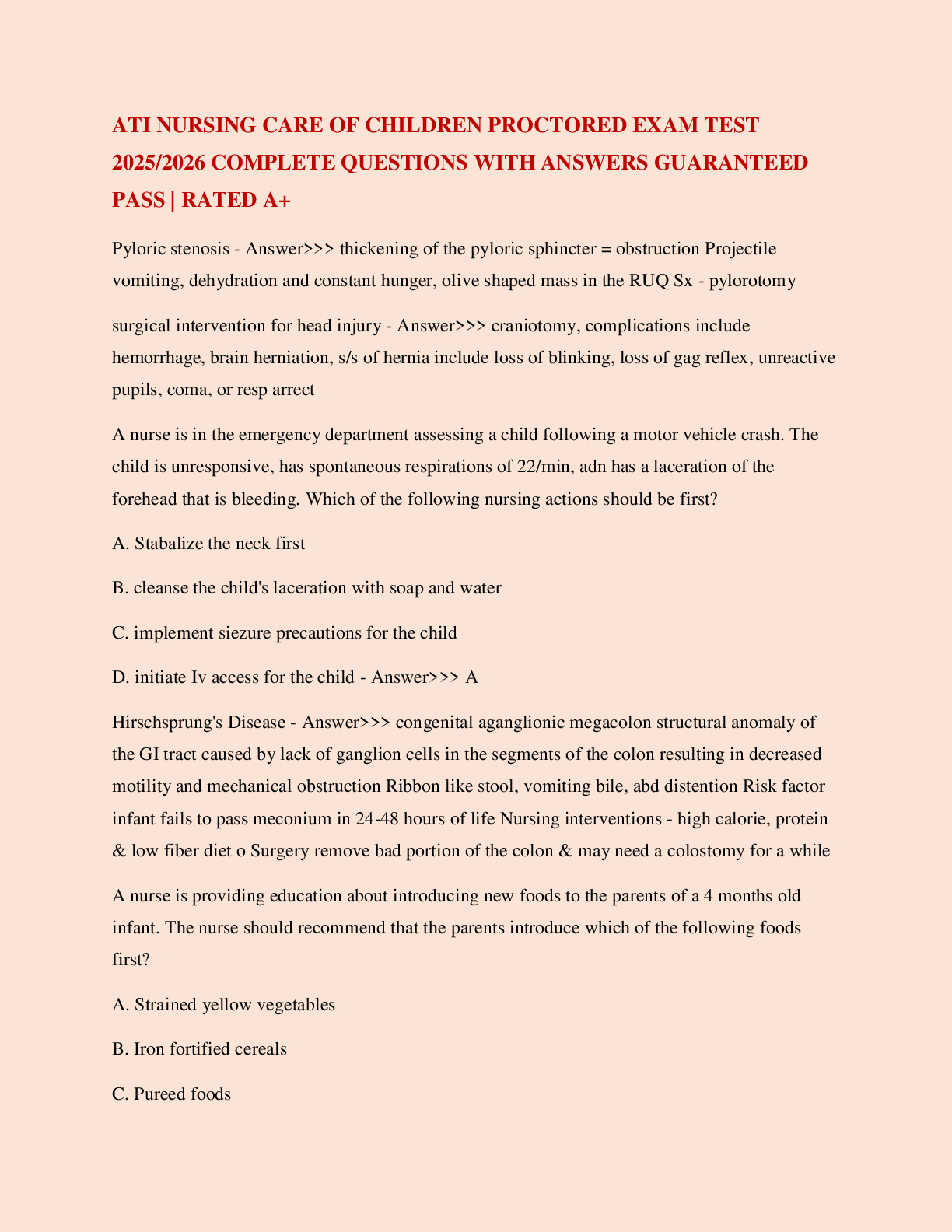

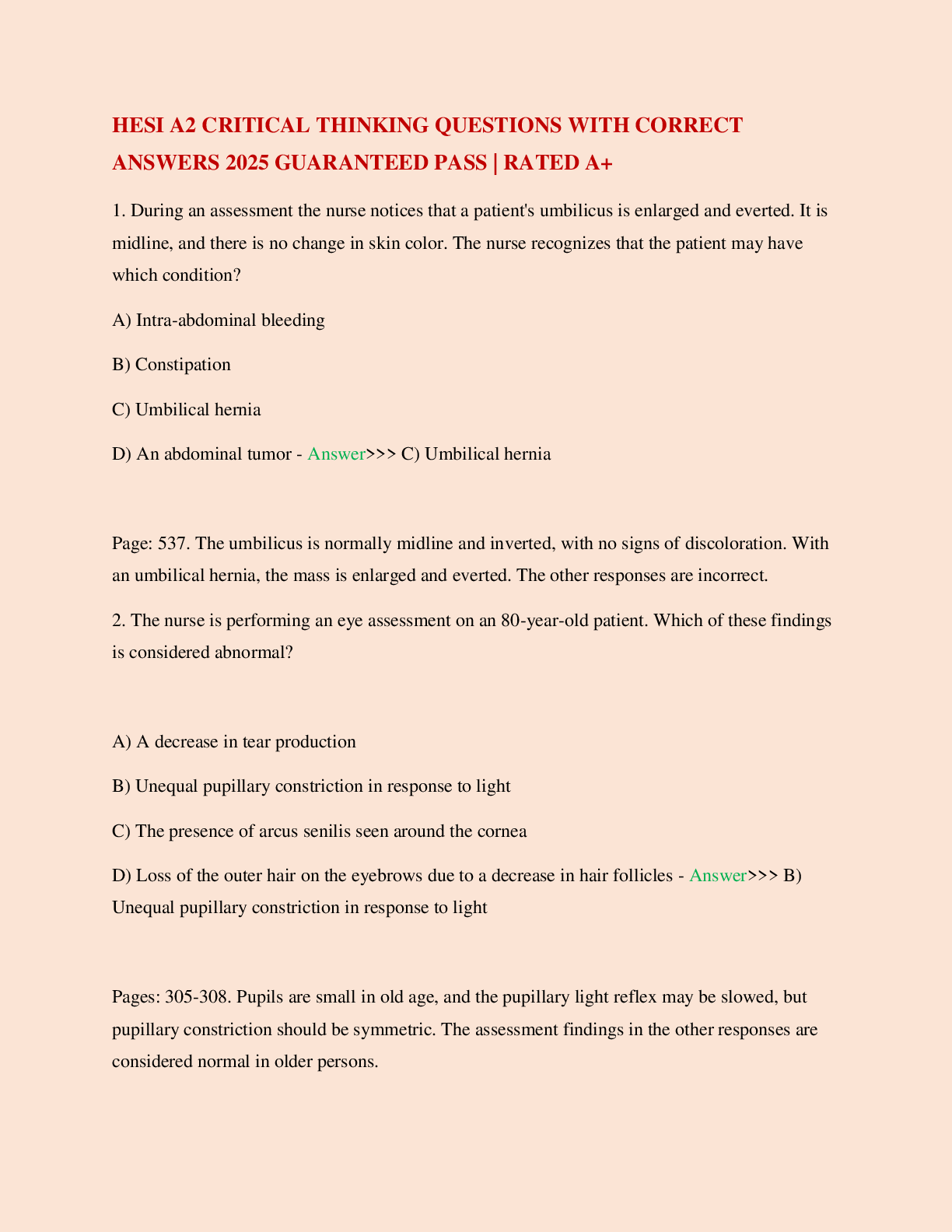
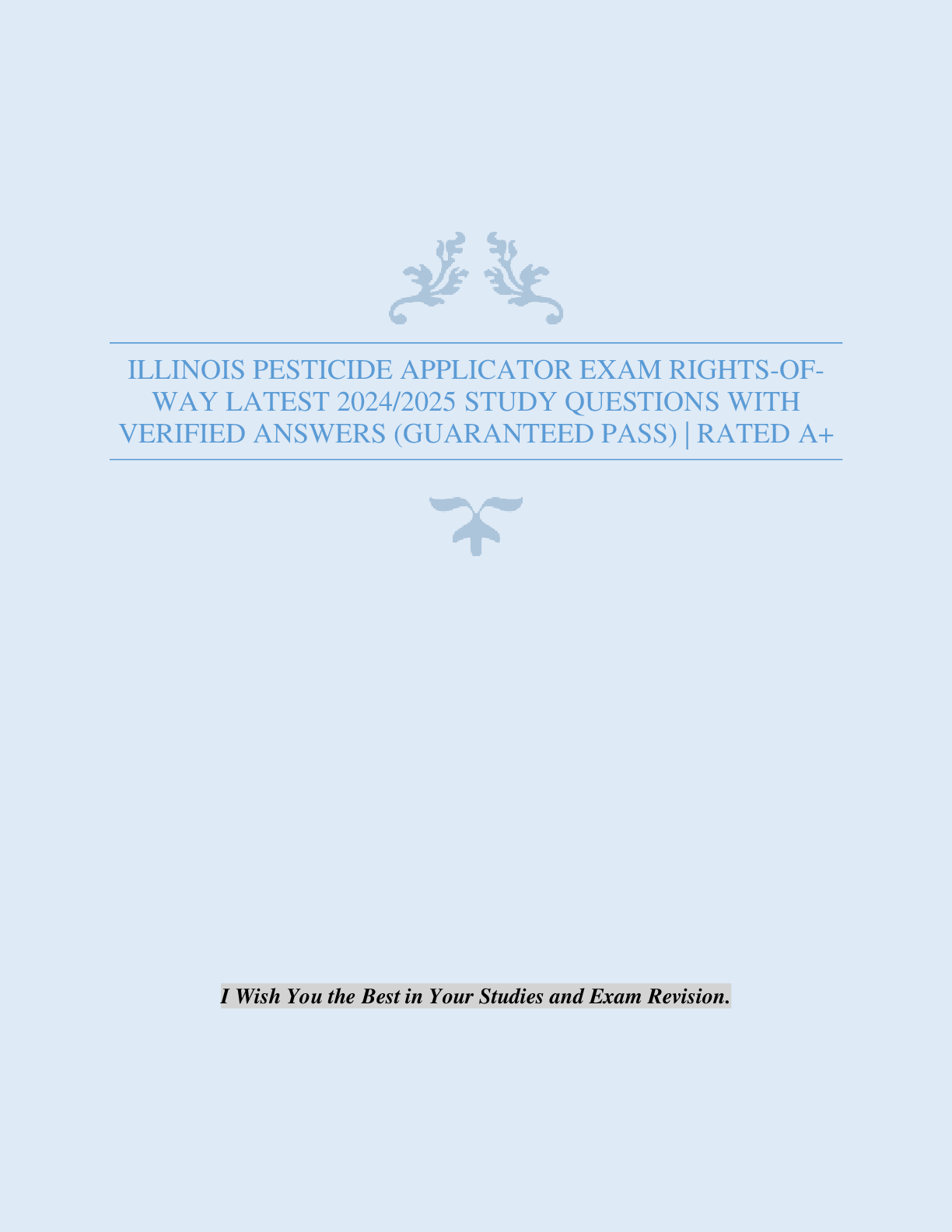

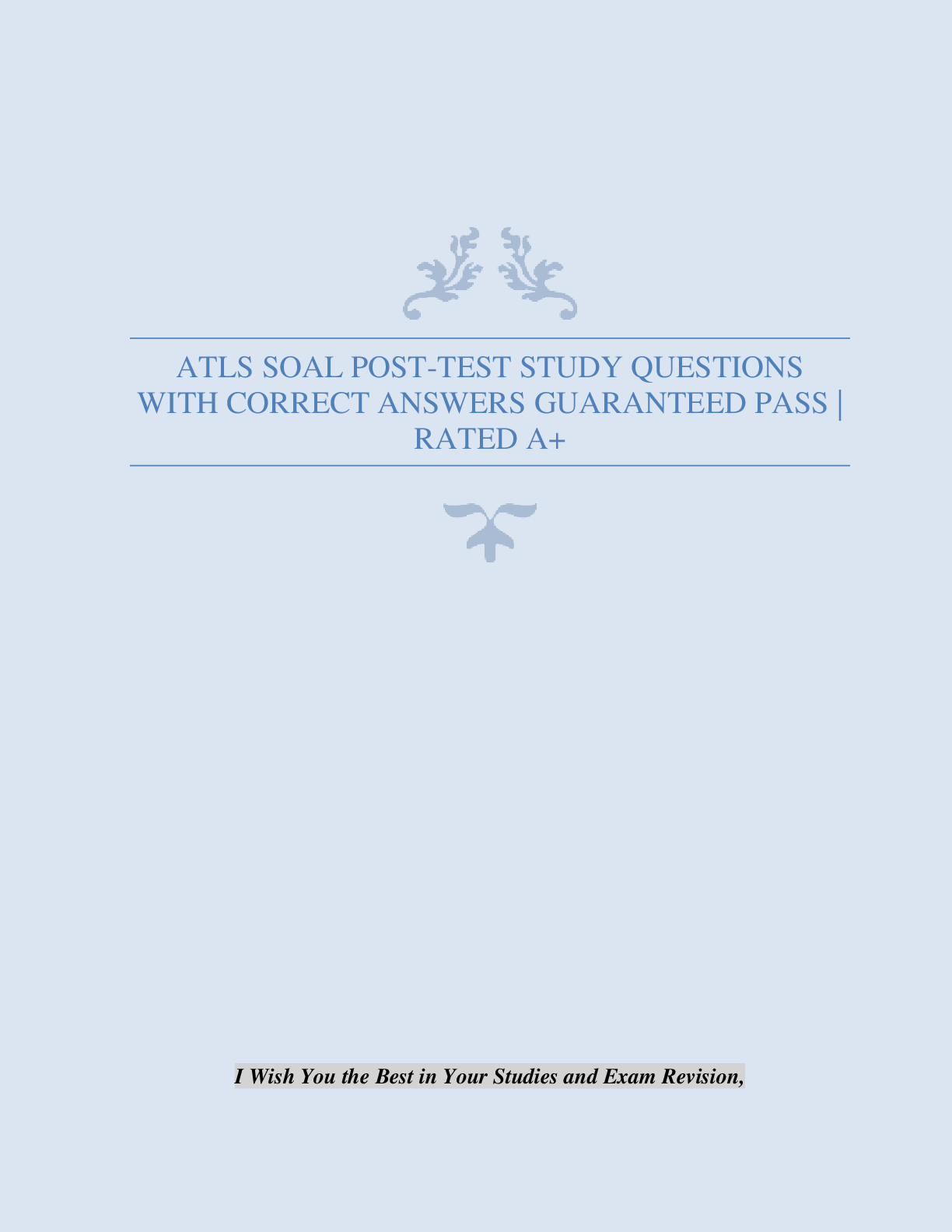
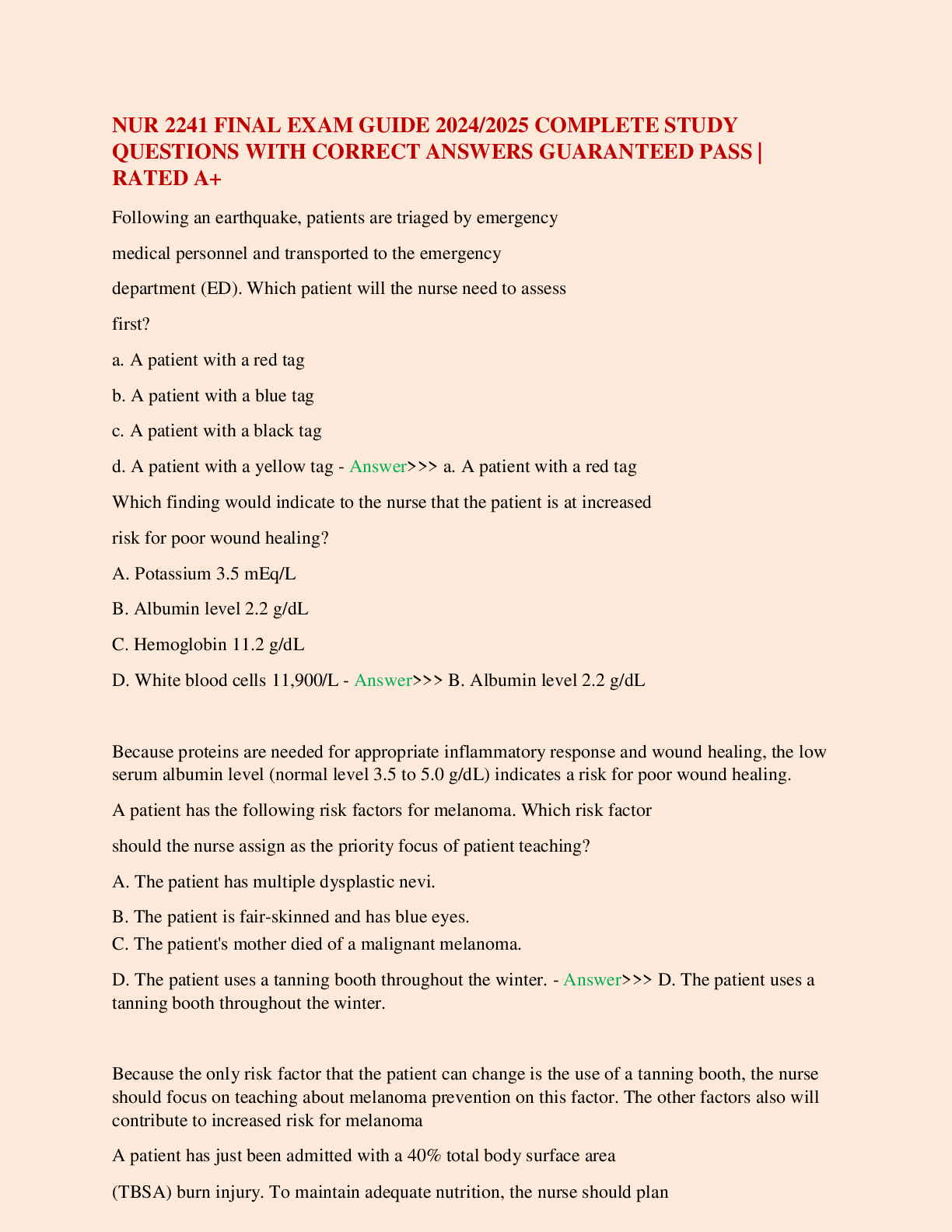
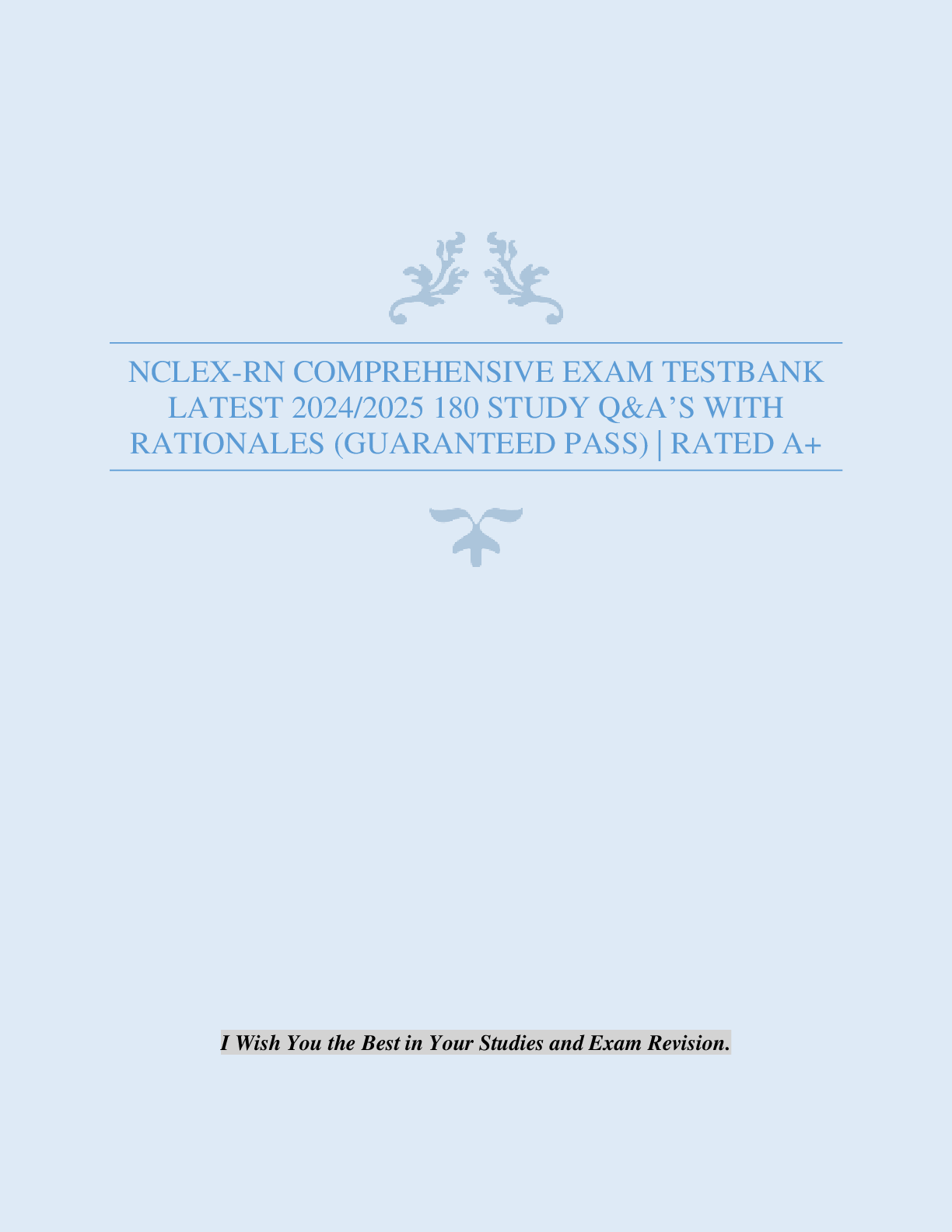
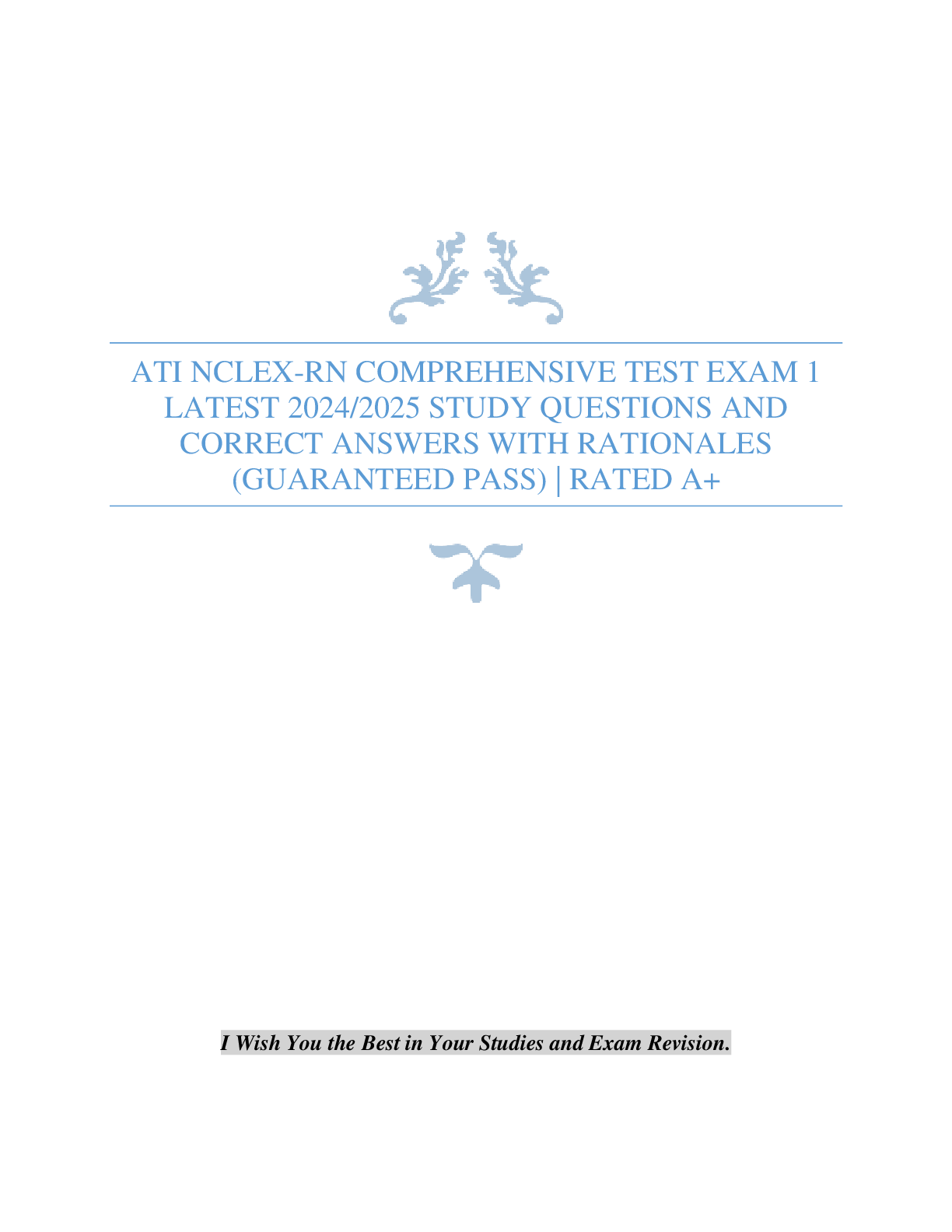
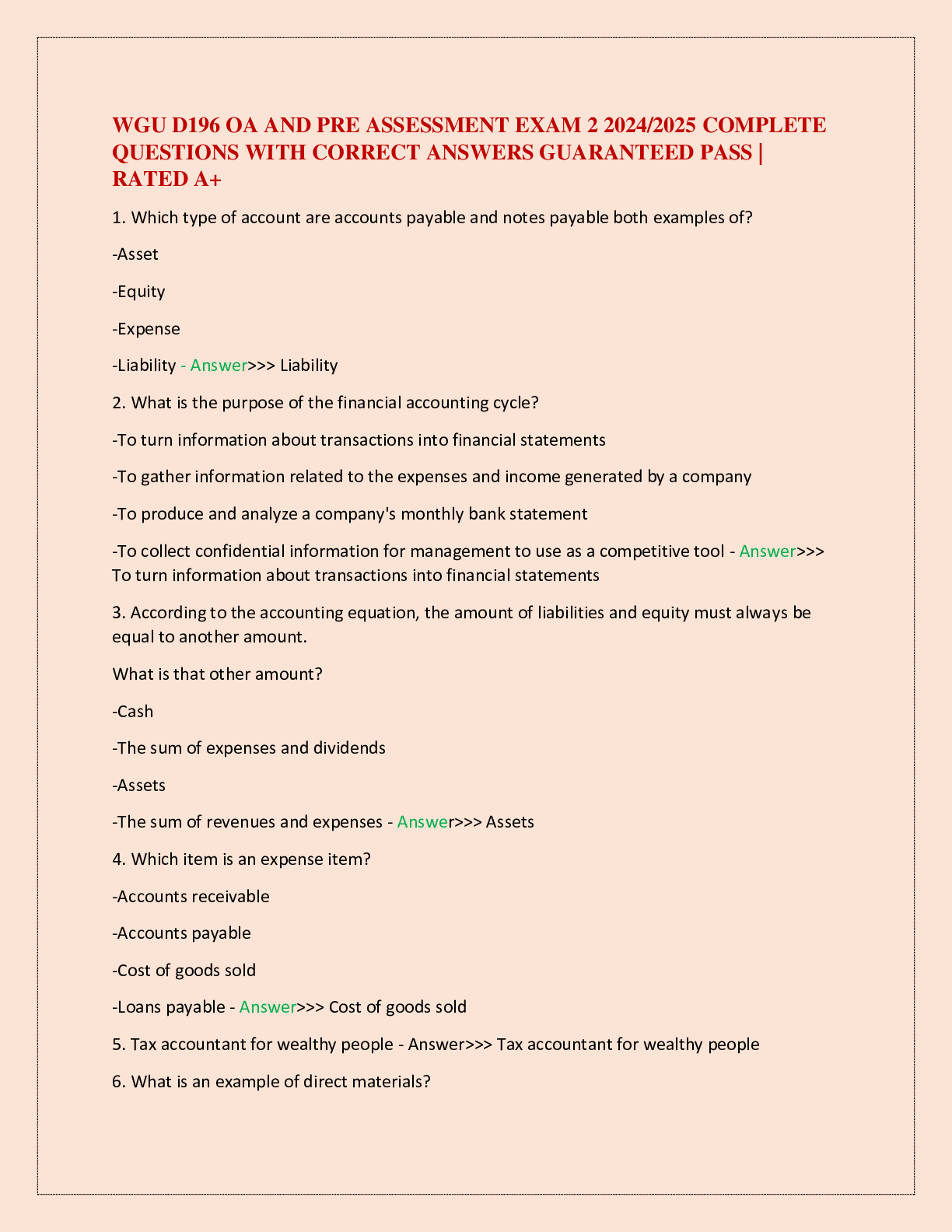

.png)
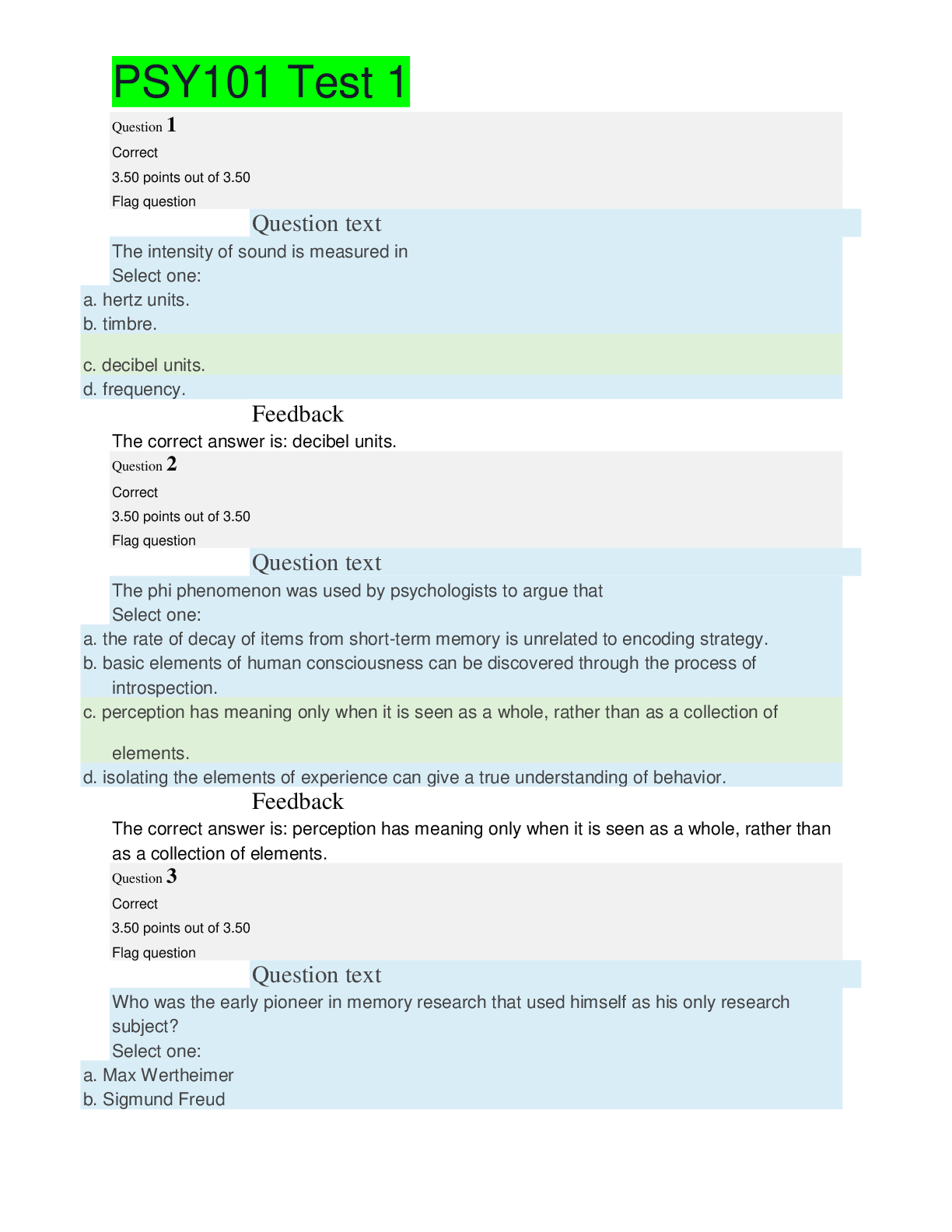
.png)
.png)


.png)
.png)
.png)
